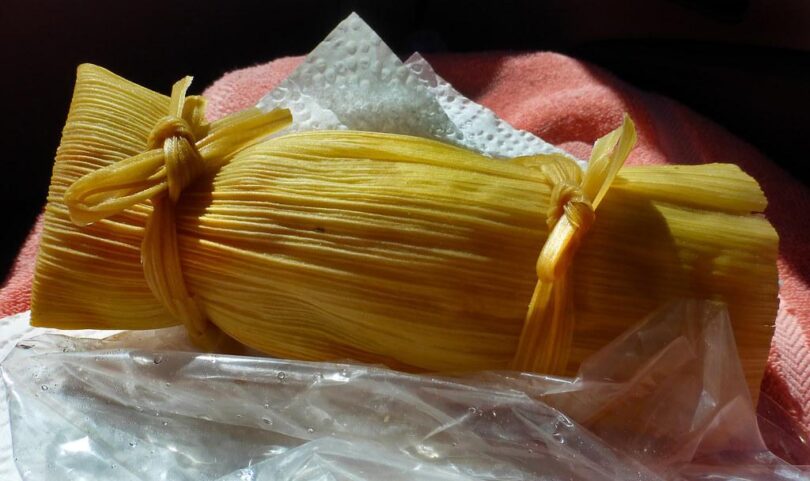Dating back hundreds of years, tamales are beloved staples of Latin American cuisine, one of many dishes that have been embraced around the world due to their distinct flavors and aromas. Originating in Mesoamerica, tamales have been an integral part of the Latin American diet for centuries. It is a food that is flavorful, filling, and steeped in rich cultural tradition. From Mexico to the Caribbean, these tasty treats are enjoyed by all. In this article, we will explore the fascinating history and evolution of tamales, and learn more about how this beloved culinary icon has stood the test of time.
1. Origins and History of Tamales
The history of tamales is rooted in Latin American culture, tracing its origins all the way back to 7,000 BC. Before the arrival of Europeans in the ancient Americas, tamales were a staple dish among many traditional Mesoamerican cultures. These ancient recipes featured maize, a grain native to the region, as their main ingredient.
Tamales are a type of wrapped dish, consisting of a corn-based dough filled with either savory or sweet ingredients. The dish was known by a variety of names in different regions, from tlacoyos in Mexico to humitas in Chile to humintas in Peru.
Basic Tamale Preparation
- Prepare the masa (dough) by combining maize flour or meal with either pork lard or vegetable oil.
- Mix the masa with salt, chili, and baking powder.
- Spread the masa on a corn husk and over the fillings.
- Fold the corn husk around the filling.
- Steam the tamales.
Throughout history, tamales have been used for festive celebrations, ritual offerings, and even military deployments.
In Mexico, tamales are especially popular during the holiday season. During December, Mexican families gather together to make and share tamales. Tamales feature prominently in Mexican music, literature, and art, becoming a true symbol of Mexican culture and customs. Today, tamales have spread to all corners of the world, representing a rich cultural and culinary history of Latin American cuisine.
2. Tamales: An Expression of Different Cultures
The rich history of tamales can be tracked throughout Latin America, stretching back centuries as a key food source of pre-Columbian civilizations. While the variations of tamales that have been created over the centuries vary from country to country, all tamales share a few common threads. At the most basic level, tamales consist of cooked masa (corn dough) that is wrapped (typically in a corn husk or banana leave) and steamed. As they are cooked, the flavors of the countless fillings, from sweet to savory, are infused into the masa.
Today, tamales are a well-loved staple of Latin American cuisines, with each region bringing its own variations to the classic dish. In Central and South America, tamales are often savory, filled with a variety of meats and vegetables, while in Mexico tamales often have a sweeter side to them, filled with fruits, jams, and honey. Mexican culture also embraces sweet tamales, adding a new dimension to the traditional snack.
To understand the diversity of tamales, you must consider the many different cultures that have come together to create the beloved dish. From indigenous cultures to those that arrived with the conquistadores, tamales have been a bridge between cultures, transforming and evolving with each region that produces it. This is why each region has its own unique style – from the spicy, garlicky Mexican-style tamales, to the sweeter Puerto Rican-style tamales, to the tropical Ecuadorian-style tamales with their tropical fruits and spice.
Tamales are much more than just food, they are a symbol of Latin American culture and a source of culinary pride. Whether you are eating savory or sweet, each tamale carries with it a story of a rich cultural exchange, giving us a glimpse into the culinary traditions of Latin America.
- In Central and South America, tamales are often savory, filled with various meats and vegetables.
- In Mexico, tamales have a sweeter side, often filled with fruits, jams, and honey.
- Each region has its own unique style of tamales—Mexican-style, Puerto Rican-style, and Ecuadorian-style.
- Tamales are a symbol of Latin American culture, and are a source of culinary pride.
3. Traditional Tamales Around Latin America
Tamales have been an iconic food in Latin America for centuries, with each region having its own unique flavor and texture. In Mexico, tamales are typically filled with pork, chili guajillo, chicken, or cheese, while in Costa Rica, the offerings vary, from vegetables to pork, and even chocolate. In Central America, tamales typically consist of grains such as rice or maize, while in South America, they are filled with a combination of ingredients, like carne mechada in Venezuela or mazamorra in Colombia.
No matter the filling, tamales are steamed for hours, often wrapped in banana leaves or corn husks. They are often handheld and eaten during special occasions, like birthdays, weddings, and Christmas celebrations. Tamales are also found at street stands, marketplaces, and home-cooked meals.
Given their abundance in Latin America, there are various traditional recipes to savor. For example, in Nicaragua, nacatamales have a distinct flavor and texture, as they are made with cornflour, pork, chicken, olives, potatoes, and a variety of spices. In Colombia, cazuela de chicharron is a deep-fried tamale with pork and beef, while in Peru, tamales representModern versions include bell peppers, corn, cheese, and variety of spices.
A few other must-try tamales include:
- Chanchamito (Venezuela)
- Hojaldras (Guatemala)
- Yuca-bhajji (Brazil)
- Humitas (Chile)
- Platanos Cubanos (Cuba)
Given their unique flavors, textures, and versatility, tamales have a truly special place in Latin American history and cuisine. Next time you visit this vibrant region, do not miss experiencing at least one traditional tamale.
4. Making the Perfect Tamale
Tamale making is an ancient and unique tradition deeply rooted in various Latin American cultures. Crafting the perfect tamale often involves techniques that have been passed down from generation to generation, creating a unique and delicious experience. Following are four tips for :
- The Masa – Before starting on the tamale itself, it’s important to start with great masa. The mix of corn flour, lard, salt, and other seasonings used to make the masa should be of the finest ingredients to ensure a delicious flavor.
- The Filling – Maybe the most important factor in crafting the ideal tamale is the filling. Traditional Latin American fillings range from pork, chicken, beef or shrimp, to cheese, sweet corn, and black beans – offering significant variation from region to region.
- The Wrapper – While the drying process of the masa and the addition of fillings will create a different texture and flavor than when it began, the wrapper will preserve the tamale’s finished shape. Allowing a vegetable such as a banana leaf or corn husk wrapper adds flavor and complexity while simultaneously holding together the tamale filling, masa, and steam.
- The Steam – Both the temperature and the length of the steam process will be a determining factor in how the perfect tamale will turn out. Too long of a steam time will make the masa crunchy, while too little time will make the masa too soggy. The perfect steam time balances the flavors and textures just right.
When executed correctly, these four tips will ensure a unique and delicious experience with Latin America’s traditional tamales. The combination of great masa, flavorful filling, the right wrapper, and a precise steam time will ensure the perfect tamale every time.
5. Tamales Through a Modern Lens
The History
Tamales have been a staple food in Latin America since pre-Columbian times. Originating in mesoamerica, tamales have been used to mark special occasions and festivals for centuries. They are not only a delicious dish but also a symbol of social gatherings and a way of passing stories and traditions down the generations.
Modern Variations
Today, tamales have evolved to include new ingredients and flavouring techniques. From vegetarian tamales, to those filled with meat, beans or fruit - there are now endless possibilities when it comes to these bundles of goodness. Some love to top them with cream, cheese, or a variety of sauces to introduce their own twist.
Savouring the Moment
Tamales bring people together in ways much deeper than mere sustenance. Eating tamales is a way to savour life’s moments, to create experiences over individuals and to take a break to relax and just enjoy.
In Latin America, tamales continue to be an important part of cultural identity and they always draw crowds with their flavours and aromas. From farmers to CEOs, tamales bridge generations, countries, and social backgrounds.
Tasting the Tradition
Whether it’s a professional or home cook preparing them, tamales continue to evoke joy and social gatherings. Every bite is packed with a unique combination of history, ancestral culture, and modern flavors. A must try when exploring Latin America’s varied cuisine!
6. Creative Ways to Enjoy Tamales
- Stuffed Tamales: Bring a taste of Latin America to your home with stuffed tamales. Stuffed tamales are made with a corn-based dough that’s filled with a variety of meats, vegetables, and other delicious ingredients, then wrapped up in a plantain leaf and steamed until cooked through. Enjoy them along with a side of arroz con frijoles (rice with beans) for an authentic Latin American meal.
- Tamales as Finger Food: Ready-made tamales make a tasty addition to any party or get-together. Choose from a variety of fillings, from chicken to vegetables, and serve them up as a delicious appetizer. Alternatively, wrap tamales individually in aluminum foil and toast them on the grill for a unique take on the traditional dish.
- Breakfast Tamales: Start your day with a Latin-inspired meal by serving up breakfast tamales. Made with a variety of fillings, including chorizo, cheese, and refried beans, these tamales are sure to give you the energy you need to take on the day.
- Tamale Pie: Make a delectable tamale pie by combining a cornbread mix, ground beef, garlic, chili powder, cheddar cheese, and tomatoes in a casserole dish. Spread the mixture in the dish and top with cooked and shredded tamales. Bake in the oven until the cheese is melted and the top is slightly golden brown – yum!
- Tamalitos: Tamalitos are small, bite-sized tamales, perfect for parties or snacks. Make your own by shaping the dough into small balls, then filling it with a variety of flavorful ingredients. Wrap them up in banana or plantain leaves and steam them. Serve them hot with a variety of dipping sauces for an out-of-this-world snack.
- Tamales with a Twist: If you’re feeling adventurous, why not try making tamales with a unique twist? Add unexpected ingredients like plantains, pineapples, and raisins to the dough or filling, and experiment with different spices and seasonings to create a tasty treat.
7. Tips to Making Delicious Tamales at Home
1. Research: To make delicious tamales, it’s important to do some research first. Look into the different recipes, types of ingredients used, and techniques required to make the perfect tamale. By learning about the different regional variations as well as the general steps required for a successful tamale, you’ll be well-prepared for the cooking process.
2. Select the Filling: Tamales can be filled with a wide variety of ingredients – from sweet fruits and nuts to savory proteins and vegetables. Carefully select your ingredients in order to create the ultimate complementary flavor combination. Consider selecting both a main filling and a secondary one to really boost the taste.
3. Gather the Preperatory Ingredients: Tamale dough often includes lard, baking powder, chicken stock, and a Mexican spice mix such as adobo, guajillo pepper, or smoked paprika. You can find all of these ingredients in most grocery stores or online. Have measured amounts of these preperatory ingredients ready in order to begin the assembly process.
4. Prepare the Filling: Depending on the filling you’ve selected, prepare it ahead of time. This could involve cooking chicken or beef, dicing potatoes, shredding cheese, marinating fruits, and so on.
5. Assemble: Spread the lard and baking powder mixture onto a corn husk, and wrap it around the prepared filling. Make sure you leave enough room at the ends to secure the wrapper before steaming.
6. Steam & Enjoy: Place the filled wraps in a steamer and let them cook for 20-30 minutes. When finished, simply remove from the steamer and enjoy. Tamales can be served with salsa, sour cream, guacamole, or whatever other topping you like.
7. Experiment!: Tamales offer a great opportunity to get creative with flavors. Try experimenting with different fillings, wrapper combinations, and cooking styles in order to find your favorite tamale recipe. Have fun and don’t be afraid to explore. To sum it up, it’s no secret that the deliciousness of tamales has been enjoyed in Latin America for centuries. This unique culinary staple remains a timeless tradition that continues to leave its stamp across the region, lingering through generations of eager appreciators. Tamales are certainly here to stay – and that is something we can all take comfort in.








